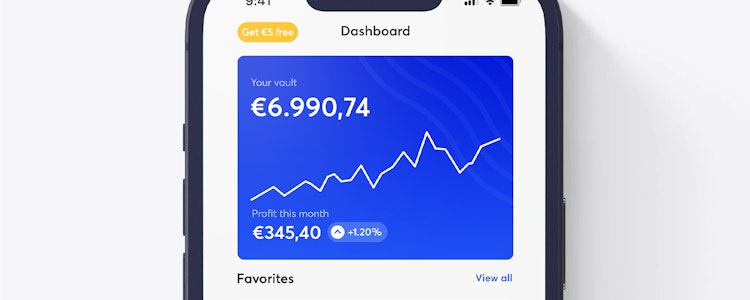News - The top 10 most important Bitcoin moments
By
The top 10 most important Bitcoin moments
When Bitcoin began in 2008, no one expected today's success. From just $0.09 on July 17, 2010, cryptocurrencies exploded to an all-time high of $68,789 on Nov. 10, 2022 - an increase in value of more than 76 million percent. Beyond the price increase, Bitcoin has experienced a host of significant events over the past 15 years - here are 10 of them.
1. Financial crisis 2008
The loss of trust and the 2008 financial crisis: The starting gun for Bitcoin. The idea of a decentralized digital currency as an alternative to existing payment methods quickly found supporters. In an uncertain time, Satoshi Nakamoto had the answers - to money issues, which were independent of government control.
Decentralization and security without a third party, using blockchain technology, that was the revolutionary approach. The crisis was a turning point that raised awareness of the weaknesses of the financial system and paved the way for innovative solutions like Bitcoin. Not for nothing did Satoshi Nakamoto quote the British Times in the first block of Bitcoin.
2. Genesis Block
The Genesis block is the first block in a blockchain. When a new block is added to the blockchain, it references the previous block. In the Genesis block, however, there is no referenced block. Satoshi created the first Bitcoin block on Jan. 3, 2009.
It included a reference to an article in the British Times about the bank bailout in the wake of the financial crisis. The title of this article, encoded in the blockchain, is: "The Times 03/Jan/2009 Chancellor on bring of second bailout for banks .". A reference to the failure of the financial structures of the time.
Today marks the 13th anniversary of the #Bitcoin Genesis block. pic.twitter.com/nLLtxmE1f4
— Bitcoin (@Bitcoin) January 4, 2022
3. First transaction to Hal Finney
The first bitcoin transaction took place on Jan. 12, 2009, just three days after the first open source bitcoin client appeared on the Internet. Satoshi Nakamoto transferred ten bitcoins to Hal Finney, an American software developer. The transaction was a test to verify the operation of the client and the update of distributed blockchain ledgers.
Finney downloaded the first public version of the Bitcoin client on Jan. 9, 2009, and participated in several early tests of the system, including this transaction. The transaction was recorded in block number 170. In the first year after the Bitcoin blockchain was launched, there were no other transactions except this one. It wasn't until January 2010 that other users made transactions.
4. First commercial transaction: pizza day
Every year on May 22, the Bitcoin community celebrates Pizza Day. 13 years ago, software developer Laszlo Hanyecz bought two pizzas for about 10,000 BTC - the first commercial transaction with Bitcoin. On the BitcoinTalkForum, Hanyecz was looking for someone to order two large pizzas for him. Another user accepted the offer, paid $25 for the pizzas and got 10,000 BTC in return, about $41 at the time.
As the BTC price explodes, there is still much debate about the long-term cost of this transaction - 10,000 BTC is worth $260 million at the time of writing. An issue that makes Bitcoin unattractive as a means of payment. Finally, the demand to pay with BTC remains low. If our fiat money is becoming worth less and less and bitcoin is becoming more valuable, why use your Bitcoin as a means of payment?
Happy bitcoin pizza day everyone. Those pizzas are now worth 300 million dollars. pic.twitter.com/zEriVm8h8e
— Charles Hoskinson (@IOHK_Charles) May 23, 2022
5. Mt.Gox: The biggest crypto hack
In February 2014, the largest crypto hack in history took place. The attackers stole about 850,000 BTC from the Japan-based exchange Mt.Gox - about $450 million at the time of the hack.
Important to know: the blockchain has not been hacked. "The security of the blockchain, which verifies and confirms Bitcoin transactions, practically cannot be hacked using any known technique or technology," writes Guinness World Records. The hackers instead gained access to Mt.Gox's hot wallet keys and stole the balances on them. To this day, users are waiting for compensation.
6. Silk Road: source of bad image
Bitcoin is criminals' money: there are still critics who claim that. This image has long been attached to cryptocurrencies - thanks to Silk Road. The online drug marketplace that launched in January 2011 saw Bitcoin as the payment method of choice for illegal goods and services. This led to the same concerns about the link between Bitcoin and illegal activities.
In 2015, several U.S. federal agencies arrested the founder and sentenced him to two life terms and 40 years in prison. We now know that only stupid criminals use Bitcoin. Authorities can track transactions - including the IRS, by the way.
7. Block Size War and the Hard Fork
Bitcoin scales poorly - only seven transactions per second are possible on the main network. One supposed solution: expand the block space. The problem: If the blocks got bigger, the blockchain would grow faster and take up more space. The following is true: The more space required, the more expensive it becomes for the end user to manage their own nodes. This also reduces decentralization - and Bitcoin becomes more vulnerable to attacks.
In 2017, a fierce debate erupted - the Blocksize War. The network split - and Bitcoin Cash (BCH) was born. To scale higher, the block size was increased to eight megabytes. This lowered costs and transactions were processed faster. BCH has been in the top 30 for years, but failed to break the original all-time high, reached in 2017. In the following years, Bitcoin Cash experienced two hard forks: Bitcoin SV and eCash were created.
Fork has happened. Now awaiting first block from Bitcoin Cash. Regardless of opinions, this is very exciting/fascinating day in cryptoland.
— Erik Voorhees (@ErikVoorhees) August 1, 2017
8. Lightning Network: The answer to the block size war
To solve the Bitcoin scaling problem, the Lightning Network was born. It is a Layer 2 solution that enables fast and inexpensive off-chain transactions. Since transfers in the Lightning network are processed "off-chain," there is no need to wait for confirmation. However, the basic properties of the main layer are retained and secure the layer 2 solution. The Lightning network is therefore considered a promising solution that will improve the Bitcoin blockchain in the long run.
At its January 2022 peak, more than 20,000 node operators were supporting the Lightning network. After a decline, more than 18,000 nodes are again verifying the Layer 2 solution at the time of writing.
9. El Salvador: Bitcoin as legal tender
A pioneer on the road to global acceptance of Bitcoin: El Salvador. In June 2021, the country adopted the "Bitcoin Act" which recognized cryptocurrencies as an official means of payment alongside the U.S. dollar. Since then, citizens can conduct their transactions in BTC and businesses must accept Bitcoin as a means of payment. This decision had significant symbolic and practical significance for Bitcoin.
JUST IN: El Salvador President Nayib Bukele scared off Wall Street by embracing #Bitcoin. Now El Salvador's bonds are up 70% this year - the best performing USD bonds in Emerging Markets - Bloomberg
— Bitcoin Archive (@BTC_Archive) August 16, 2023
🏄🤙🏄♀️ pic.twitter.com/BfyOGNOEJd
The status quo, however: so far, the population is hardly enthusiastic. According to a survey, just under five percent of residents pay with Bitcoin. 95 percent still prefer the U.S. dollar for their daily purchases. However, it would be wrong to label the Central American BTC experiment a failure just two years after its launch.
Rather crucially, according to Tether CTO Paolo Ardoino, El Salvador has a so-called first mover advantage with Bitcoin law. The publisher of stablecoins invested about $1 billion in the country in June 2023 - to renewable energy and mining facilities promote.
10. Bitcoin halving
By April 2024, for the fourth time in Bitcoin's history, the amount of BTC distributed to miners per new block will be halved. Instead of 6.25 BTC, only 3.125 new BTC will enter the network. Also on a daily basis, the issue drops to 450 BTC instead of the previous 900 BTC.
In the past, this supply shock was considered an important price driver. The logic behind this is quickly explained: Constant demand meets a shortage of supply. The only variable left to move is: the price. Therefore, halving will remain one of the most important events in Bitcoin in the future.






